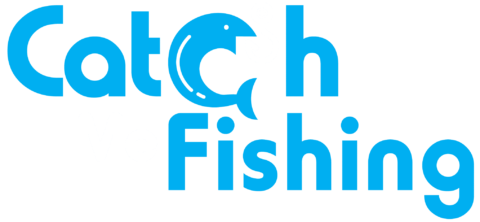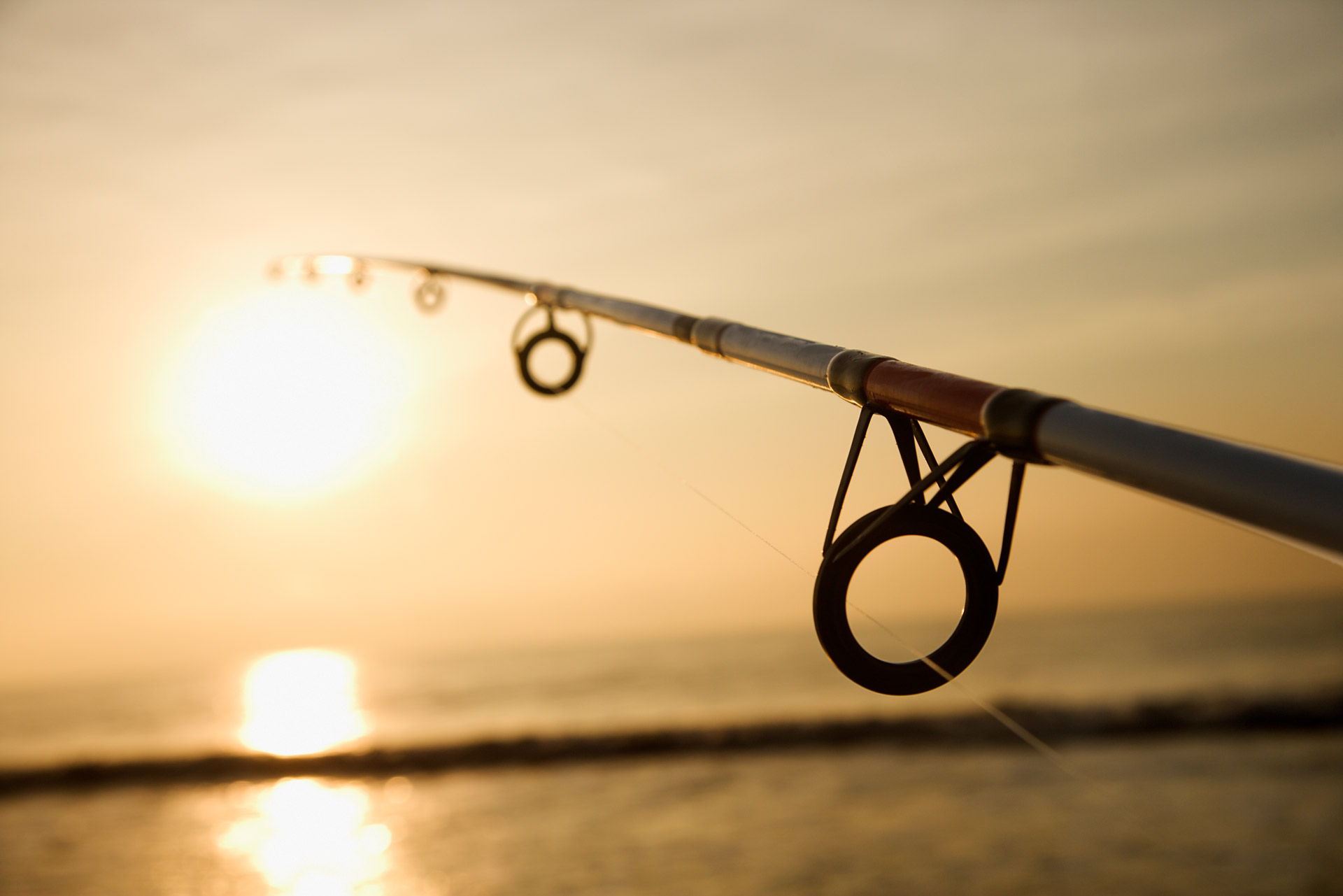The Ultimate Guide to Trout Fishing in Rivers: Unleash Your Maximum Potential
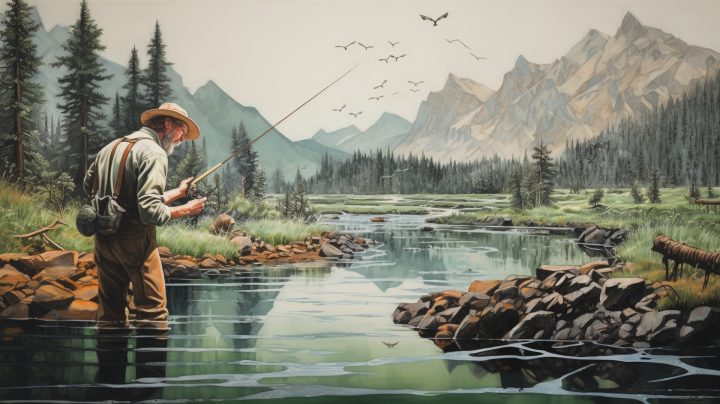
Are you ready to dive into the thrilling world of trout fishing in rivers?
Picture yourself standing knee-deep in crystal-clear water, casting your line with precision and anticipation.
You feel a rush of excitement as you watch your bait dance on the surface, enticing the elusive trout beneath.
With every tug and pull, you experience a sense of freedom like no other.
In this article, we'll guide you through the ins and outs of successful trout fishing, equipping you with valuable tips and techniques to make your next river adventure unforgettable.
So grab your gear and get ready to embark on an exhilarating journey into the world of trout fishing!
Key Trout River Fishing Takeaways
- Rivers are ideal for trout fishing due to good flow
- Look for covered spots where fish can ambush prey
- Keep an eye on your line for quick strikes
- Trout can be quick to spit the hook
Understanding Trout Behavior
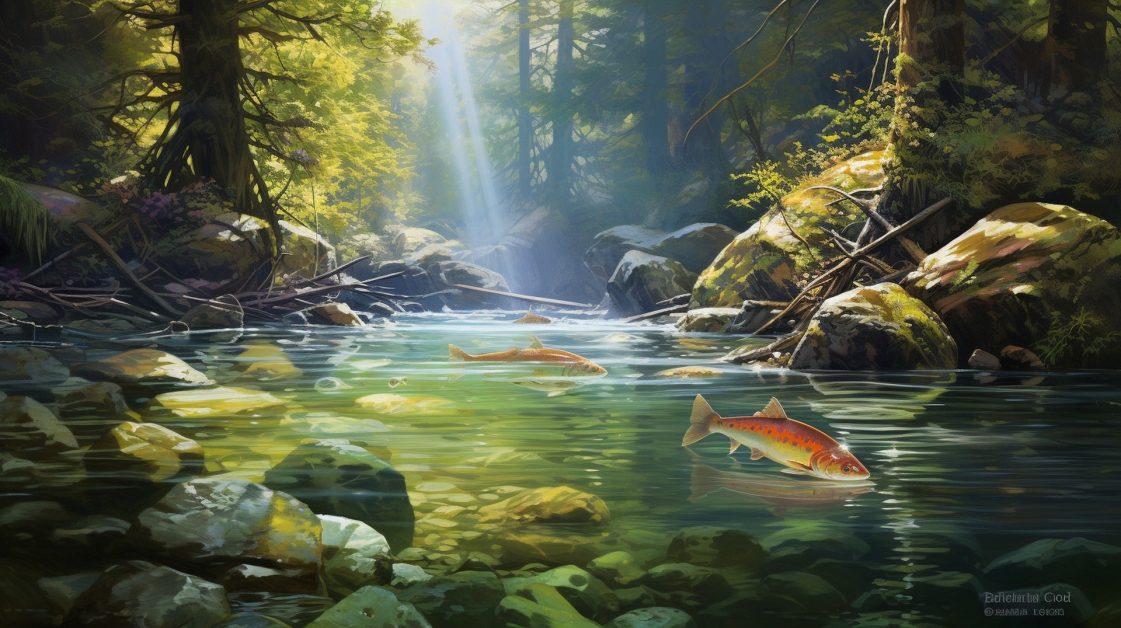
When it comes to fishing for trout in rivers, understanding their behavior is key to increasing your chances of success.
Analyzing their feeding habits will help you determine the best bait and techniques to use.
Knowing their environmental preferences will guide you in finding the right locations where trout are most likely to be found.
Additionally, understanding the behavioral differences between trout and bass will enable you to tailor your fishing approach accordingly.
Analyzing Trout's Feeding Habits
To improve your chances of catching trout in rivers, it's important to understand their feeding habits and tailor your bait choices accordingly. Analyzing trout's feeding habits can give you valuable insight into their behavior and help you select the most effective bait.
Here are three key points to consider:
- Trout are opportunistic feeders: They will eat a variety of food sources, including insects, small fish, and crustaceans. Understanding their varied diet can guide your bait choices.
- Environmental preferences: Trout prefer clear, cold water with ample oxygen levels. Look for areas with riffles, runs, or deep pools where they can find shelter and easy access to food.
- Behavior cues: Pay attention to the time of day when trout are most active in feeding. Early mornings and evenings tend to be prime feeding times.
By analyzing these factors and tailoring your bait choices accordingly, you increase your chances of enticing a hungry trout to bite.
Trout's Environmental Preferences
If you want to increase your chances of catching trout, pay attention to the environmental preferences they have.
Trout are highly adaptable fish, but they still have specific habitats where they thrive. They prefer clear and cold water with moderate flow in rivers.
| Preferred Habitats | River Flow | Water Temperature |
|---|---|---|
| Clear water | Moderate | 50°F - 65°F |
In terms of temperature, trout are most active when the water is between 50°F and 65°F. During different seasons, their behavior can change as well.
Where to Find Trout
Trout can often be found in areas of a river that provide cover and protection from predators. To understand trout's hiding spots, it is crucial to analyze their migration patterns.
These fish tend to seek refuge in structures such as submerged logs, overhanging branches, and undercut banks. By observing the river's flow and studying its features, you can identify these hiding spots where trout are likely to congregate.
When casting for trout in rivers, effective techniques include using accurate casts to hit fish shelter spots and utilizing lures or baits designed specifically for trout fishing. It is important to approach stealthily, minimizing disturbances that could spook the fish.
Remember to be patient and persistent with your castings, as trout can be elusive but rewarding when successfully caught.
Trout Behavior Differences to Bass
Trout and bass have different behavioral tendencies when it comes to seeking refuge in structures within a river. While bass are known to prefer hiding in submerged vegetation or near fallen trees, trout tend to seek shelter under rocks, logs, or undercut banks.
This difference in behavior is influenced by their feeding preferences and habitat selection. Trout are primarily insectivorous, have vomerine teeth, and feed on aquatic insects such as mayflies, caddisflies, and stoneflies. These small organisms thrive in areas with ample cover like rocky bottoms and shaded overhangs.
On the other hand, bass are opportunistic predators that rely on ambush tactics to capture their prey. They often congregate around areas with abundant prey fish, where they can strike from cover and make quick darting movements.
Understanding these behavioral differences between trout and bass can help anglers choose the right fishing spots and techniques for targeting each species effectively in a river setting.
Choosing the Right Gear
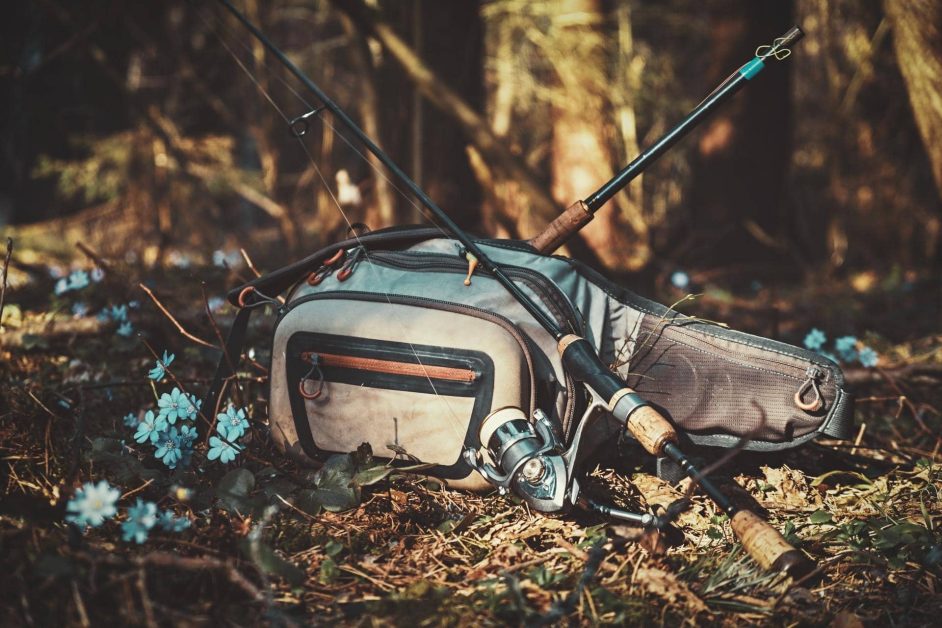
When fishing for trout in rivers, it's important to choose the right gear for optimal results. Understanding gear specifications is essential in making the right choices.
Start by selecting the right fishing line. Fluorocarbon lines are often preferred for trout fishing due to their low visibility and high sensitivity. They also sink faster, allowing you to reach deeper depths where trout often reside.
Another crucial aspect is comparing different reel options. Spinning reels are a popular choice for trout fishing as they provide smooth drag and easy casting capabilities. Look for reels that have a lightweight design and a high gear ratio for quick line retrieval.
Effective Bait Selection
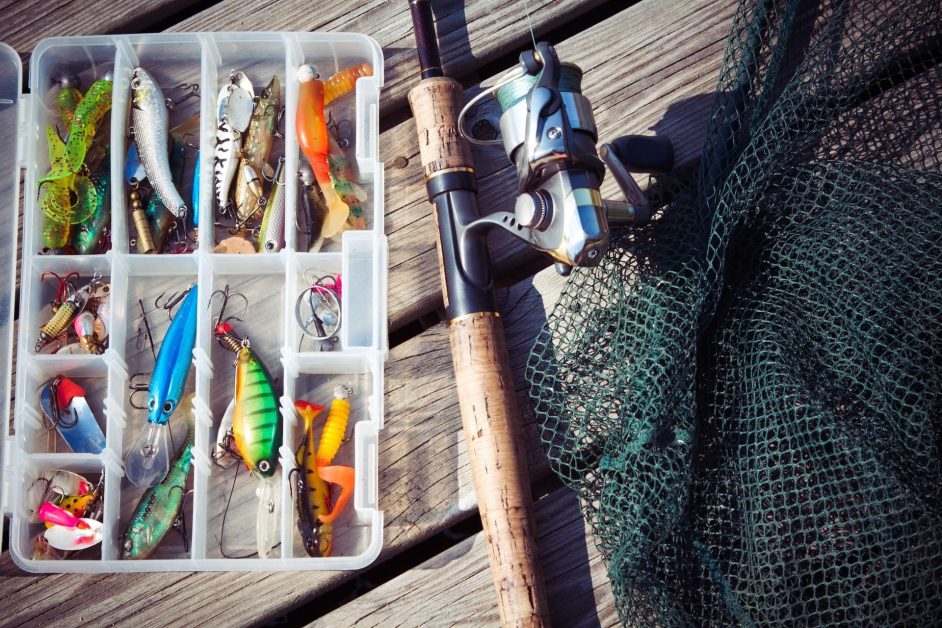
When it comes to trout fishing, understanding their natural diet is key to increasing your chances of success.
Experimenting with different baits can help you determine what works best in different situations and conditions.
Additionally, incorporating scents into your bait or lure selection can potentially attract more trout, although the effectiveness may vary.
Understanding Trout's Natural Diet
To increase your chances of success, experiment with different baits that mimic the trout's natural diet. Understanding the trout's natural diet is crucial when it comes to bait selection techniques. By analyzing their feeding habits and learning about their preferred insects, you can effectively choose baits that will attract them. Here are three key points to consider:
Research and identify the insects that trout commonly feed on in your fishing location.
- Look for information on local aquatic insects such as mayflies, caddisflies, and stoneflies.
- These insects are often abundant in rivers and are a staple in a trout's diet.
Match your bait to the natural food sources of trout.
- Use imitation flies or nymphs that resemble the size, shape, and color of the prevalent insect species.
- Consider using artificial lures that mimic small fish or other prey items found in the river.
Experiment with different bait presentations to find what works best.
- Vary your retrieve speed, depth, and casting techniques to imitate natural movement.
- Pay attention to how trout respond to each presentation and adjust accordingly.
Experimenting With Different Baits
Try using various bait options and observe which ones yield the best results in different fishing locations.
When it comes to trout fishing, experimenting with different bait types can greatly enhance your chances of success. While traditional baits like worms and minnows are effective, consider trying alternative bait options such as artificial lures or imitation flies that mimic a trout's natural diet.
The key is to present the bait in a way that is enticing to the trout. Effective bait presentation techniques include adjusting the depth of your bait or lure, using scents to attract trout, and incorporating bobbers to indicate when a bite occurs.
Incorporating Scents
Experiment with different scents to see if they enhance your chances of attracting trout while fishing in a river.
1) Start by incorporating scents into your bait or lures. You can try using attractant sprays specifically designed for fishing. These sprays come in various scents, such as garlic, anise, or shrimp, which are known to attract trout. Spray them onto your bait or lures before casting them into the water.
2) Another option is to test different scent combinations by using natural ingredients like fish oil or crushed insects mixed with your bait. The goal is to mimic the smell of the trout's natural prey and entice them to bite.
3) Keep in mind that not all scents will work equally well for every angler or fishing location, so it's essential to experiment and find what works best for you.
Lure Trout Fishing Techniques
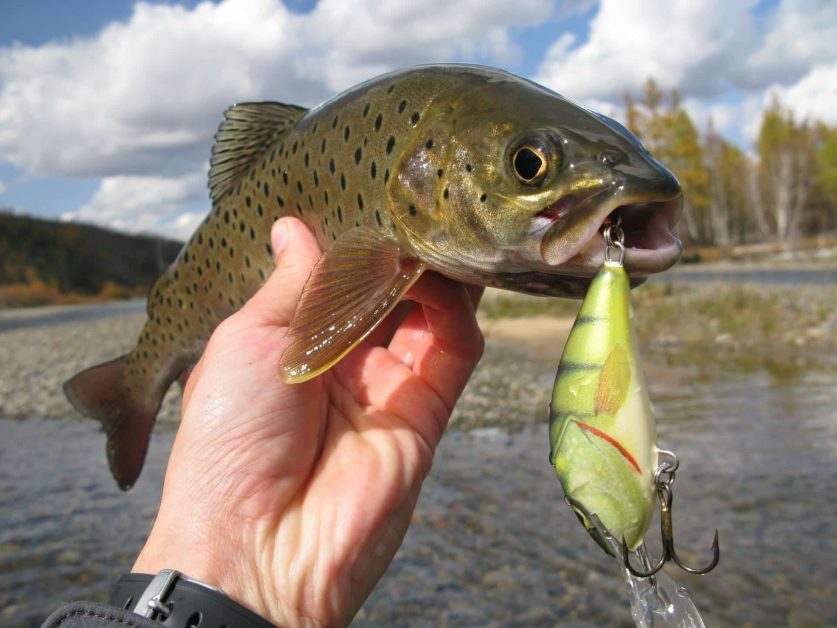
Different lures, such as spoons or spinners, can attract trout when fishing in rivers. To effectively catch trout with lures, it's important to focus on lure presentation, casting techniques, and tackle selection.
When presenting your lure, make sure it mimics the natural movement of baitfish or insects that trout feed on.
Cast upstream and let the current carry your lure downstream naturally. This imitates the behavior of prey and entices trout to strike.
As for tackle selection, choose a lightweight rod and reel combo that allows for accurate casting and easy maneuverability in river conditions.
A 2-column and 4-row table showcasing different types of lures along with their features can help you make an informed decision when selecting the right lure for your trout fishing adventure.
| Lure Type | Features |
|---|---|
| Spoons | Reflective surface attracts fish |
| Spinners | Vibrant colors mimic prey |
| Crankbaits | Diving action imitates injured fish |
| Soft Plastics | Lifelike texture and movement |
Remember to experiment with different lures to find what works best in your specific fishing location. With proper technique and the right lure choice, you'll increase your chances of catching more trout in rivers.
River Fly Fishing Methods
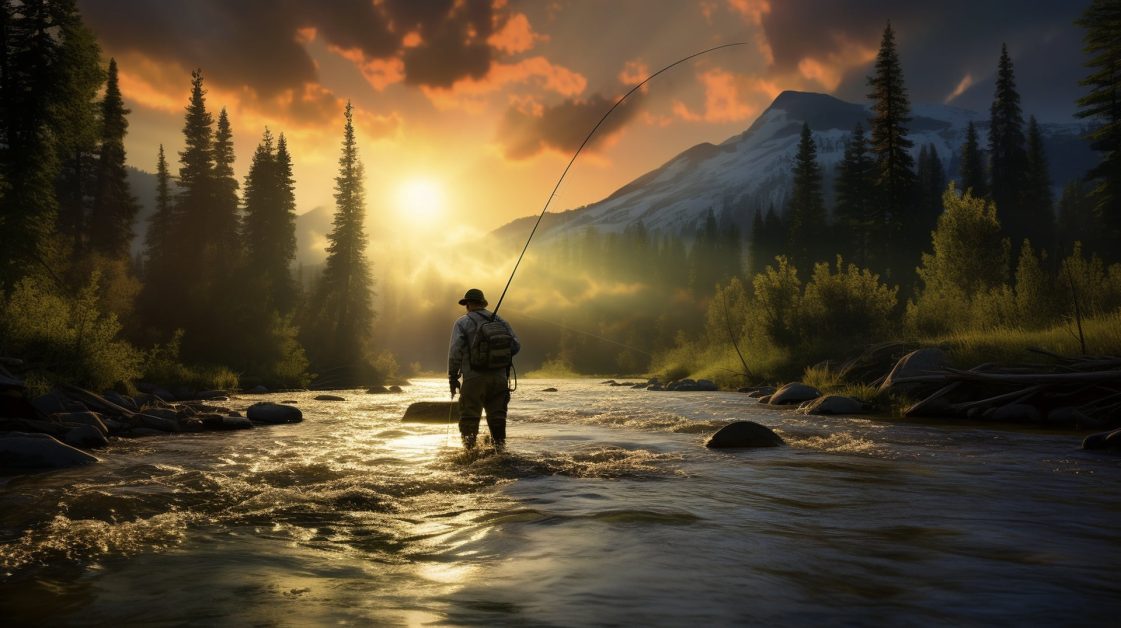
If you're looking to master fly fishing techniques, understanding trout behavior patterns is essential.
Knowing how trout behave and what they look for in their food can greatly improve your success on the water.
Mastering Fly Fishing Techniques
To master fly fishing techniques for trout in rivers, try using artificial flies that imitate the insects they feed on. This is a highly effective method that allows you to mimic the natural food source of trout and increase your chances of success.
When it comes to casting techniques, practice is key. Mastering your casting skills will improve your accuracy and distance, allowing you to reach those elusive trout hiding in river currents.
Reading river currents is another crucial skill to develop. Understanding how the water flows and where trout are likely to be positioned will help you target the right areas.
Lastly, selecting the right fly line is essential. Consider factors such as weight, taper, and material when choosing a fly line that suits your fishing style and the conditions of the river.
Trout Behavior Patterns for Fly Fishing
Transition: Now that you have mastered the techniques of fly fishing, let's dive deeper into understanding trout behavior patterns. By understanding their feeding preferences, habitat choices, and migration patterns, you can improve your chances of success when fly fishing for trout in rivers.
Current Subtopic: Trout Behavior Patterns for Fly Fishing
Trout are known for their unique feeding patterns, which can vary depending on several factors such as water temperature, time of day, and available food sources. To help you visualize these behavior patterns, here is a table outlining some common trout feeding behaviors:
| Feeding Pattern | Description |
|---|---|
| Surface Feeding | Trout actively feed on insects or small prey floating on the water's surface. This behavior is often observed during hatches or when there is abundant insect activity. |
| Subsurface Feeding | Trout feed just below the water's surface where they can target nymphs or emergers. This behavior is commonly seen during periods when insects are transitioning from underwater to the surface. |
| Bottom Feeding | Trout search for food near the riverbed by picking up small organisms like nymphs or larvae that dwell in sediment or rocks. This behavior occurs when there is limited insect activity on the surface or when specific bottom-dwelling organisms are present in abundance. |
Understanding these feeding patterns will guide your choice of flies and presentation techniques when targeting trout in rivers. Additionally, knowing their preferred habitat preferences is crucial to effectively locate them and increase your chances of success.
Trout prefer habitats with specific characteristics that provide them with security, shelter, and access to food sources.
Here are some common habitat preferences exhibited by trout:
- Cold Water: Trout thrive in cooler water temperatures ranging from 50-60 degrees Fahrenheit.
- Oxygen-Rich Water: They prefer areas with well-oxygenated water such as riffles and runs.
- Cover: Trout seek shelter in areas with cover such as submerged logs, boulders, undercut banks, and vegetation.
- Current Breaks: They often position themselves behind rocks or other structures that create breaks in the current, allowing them to conserve energy while still having access to food.
By identifying these habitat preferences, you can focus your fishing efforts on areas that are more likely to hold trout.
Furthermore, understanding trout migration patterns is essential for locating their feeding grounds and increasing your chances of success.
Trout migrate within rivers for various reasons such as spawning, seeking optimal water temperatures, or following food sources. These migration patterns can vary depending on the species of trout and the specific river system.
Some common trout migration patterns include:
- Upstream Migration: Trout move upstream during the spawning season to find suitable gravel beds for laying eggs.
- Downstream Migration: After hatching, young trout may migrate downstream to find areas with abundant food sources and shelter from predators.
- Seasonal Movements: Trout may shift their location within a river throughout the year based on changes in water temperature or availability of prey.
Being aware of these migration patterns will help you target specific areas at different times of the year when trout are more likely to be present.
Trout Float Fishing
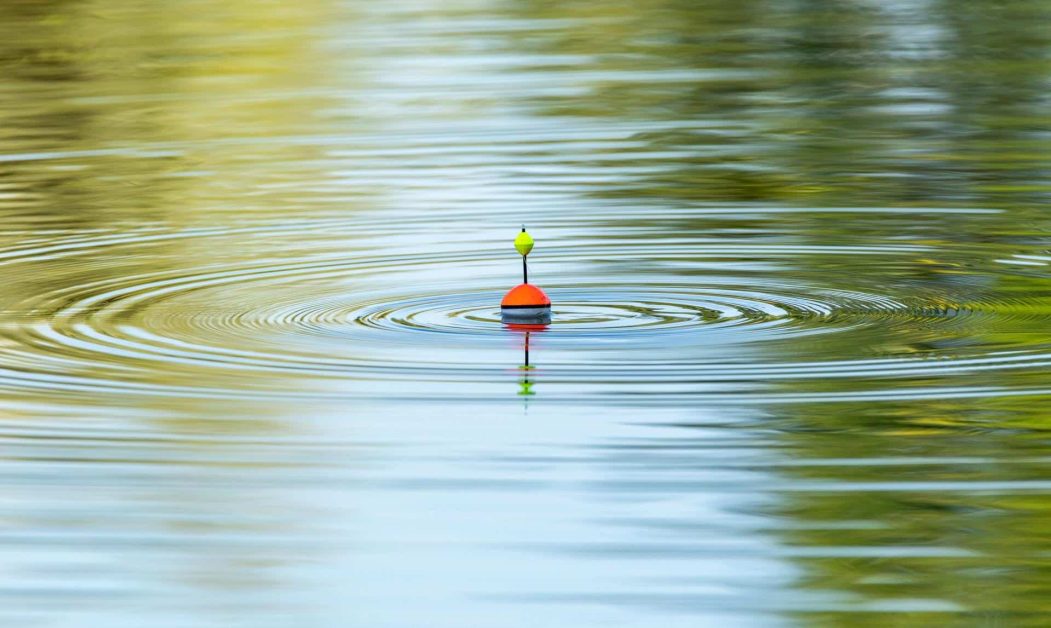
Adjusting the depth of your bait or lure can increase your chances of attracting trout while float fishing.
When it comes to trout float fishing, effective bait selection is crucial for success. To master fly fishing techniques, you must first understand the preferences of trout and their natural diet. Experiment with different baits to find what works best for you.
Aquatic insects are often the most effective bait for trout as they mimic their natural food sources. Additionally, using imitation flies can yield great results as well.
When adjusting the depth of your bait or lure, pay attention to the behavior of the trout and experiment with different depths to find where they are biting.
Seasonal River Trout Behavior
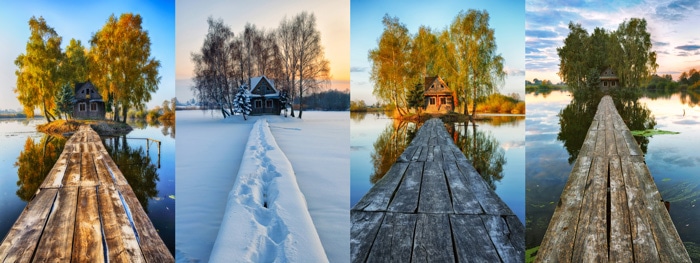
In order to effectively catch trout in a river, it is important to understand their behavior throughout the seasons.
During winter, trout tend to be less active and seek out deeper pools with slower currents.
In spring, as the water temperature rises, trout become more active and begin feeding more aggressively.
Summer brings warmer temperatures, causing trout to seek cooler areas such as deep pockets or shaded spots.
Finally, in fall, trout become increasingly voracious as they prepare for spawning season.
Winter
During the winter, trout tend to move to deeper holes in rivers. Winter trout fishing can be challenging but rewarding if you know where to find them and understand their feeding patterns.
In colder months, trout become less active and conserve energy by staying in deeper, slower-moving water where they can find shelter from harsh weather conditions. These deeper holes provide a stable habitat for trout during the winter season.
When it comes to feeding patterns, trout are more opportunistic during this time, as their metabolism slows down. They will target smaller prey such as aquatic insects or small fish that are available in these deeper holes.
It is important to adjust your fishing techniques accordingly by using smaller baits or imitating the natural food sources of trout during the winter months.
Spring
Spring is a great time to try out different fishing techniques for optimal success. As the weather warms up and the rivers start to come alive, trout become more active and eager to bite.
When it comes to spring fishing techniques, using the best flies for spring trout is essential. Some popular options include nymphs like Pheasant Tails and Hare's Ears, as well as dry flies like Adams and Elk Hair Caddis. These imitate the insects that trout feed on during this time of year.
Additionally, knowing the best spring river fishing spots can greatly increase your chances of success. Look for areas with slower currents, deep holes, and cover such as fallen trees or rock structures where trout like to hide and ambush their prey.
So get out there this spring, explore different techniques, use the right flies, and discover your favorite river fishing spots for an exciting and successful trout fishing adventure.
Summer
Summer is a popular time for anglers to explore new fishing techniques and target various species of fish. When it comes to summer trout fishing in rivers, understanding trout behavior and using the right techniques can greatly improve your chances of success.
Here are some key points to keep in mind:
- Trout tend to seek deeper, cooler waters during the hot summer months.
- Look for areas with slower currents or structures where trout can find shelter.
- Early mornings and late evenings are prime times for trout feeding activity.
- Use bait fishing with live bait like minnows or worms, or try artificial lures imitating their natural food sources.
- Fly fishing with artificial flies that mimic insects can also be highly effective.
Fall
In the fall, anglers can experience a change in trout behavior as they prepare for the upcoming winter months. During this time, it is important to analyze trout migration patterns to determine where they are congregating. This knowledge will help you select appropriate flies that mimic their natural prey and increase your chances of success.
Additionally, adjusting bait presentation is crucial in enticing trout to bite. You may need to experiment with different techniques such as varying the depth or speed of your retrieval. It's essential to pay attention to the water conditions and observe how the trout are responding.
Ideal River Fishing Depth
To increase your chances of catching trout in a river, try adjusting the depth of your bait or lure to find where the fish are biting. Understanding trout feeding habits is crucial in determining the optimal depth for fishing.
Here are some tips to help you adjust your bait depth effectively and select the right lure:
- Understand Trout Feeding:
- Study their preferred food sources such as aquatic insects.
- Mimic their natural diet with imitation flies or other baits.
- Adjust Bait Depth:
- Experiment with different depths to find where trout are biting.
- Pay attention to trout behavior and change depths accordingly.
- Effective Lure Selection:
- Consider the size, action, and color of lures when choosing.
- Research and seek advice from experienced anglers for recommendations.
By understanding trout feeding patterns, adjusting bait depth, and selecting effective lures, you can maximize your chances of success when fishing for trout in a river.
So go out there and enjoy the freedom of exploring new techniques to catch these elusive fish!
Frequently Asked Questions
What are some common mistakes that beginner trout fishermen make when fishing in rivers?
Common mistakes beginner trout fishermen make when fishing in rivers include poor bait selection, using the wrong fishing gear, and not paying attention to details. Choose the right bait based on trout's preferred food and use appropriate fishing gear for river conditions.
How can I improve my casting accuracy when fishing for trout in rivers?
Improve your casting accuracy when fishing for trout in rivers by practicing the "point and shoot" technique. Aim at specific targets, use proper rod positioning, and adjust your reel's drag. Explore the best fishing spots and ensure you have the right trout fishing gear for success.
Are there any specific techniques or strategies for catching larger trout in rivers?
To catch trophy trout in rivers, use larger bait such as live minnows or worms. Target deep holes and areas with slow current where larger trout are likely to hide. Experiment with different techniques and be patient.
What are some signs or indicators that there may be trout in a particular area of a river?
Looking for signs of trout in a river? Keep an eye out for shallow, fast-moving water with good cover like rocks or fallen trees. Trout love to hide and ambush prey in these areas.
Are there any specific regulations or guidelines that I should be aware of when fishing for trout in rivers?
When fishing for trout in rivers, it's important to be aware of the guidelines and fishing regulations in your area. These regulations may include catch limits, size restrictions, and specific fishing seasons. Always check with local authorities before you start fishing.
Conclusion
In conclusion, trout fishing in rivers can be a thrilling and fulfilling experience if approached with the right knowledge and techniques. By understanding trout behavior, choosing the appropriate gear, and selecting effective bait, you can increase your chances of success. Experimenting with different lures and fly fishing methods can also be beneficial.
It is important to note that seasonal river trout behavior plays a significant role in their feeding patterns and movement. Now here's an interesting statistic: Did you know that 70% of successful trout anglers adjust their fishing depth based on water temperature? This highlights the importance of adapting your approach to maximize your chances of catching these elusive fish.
So go out there, enjoy the adventure, but always remember to practice catch and release and adhere to local rules for sustainable trout populations.


